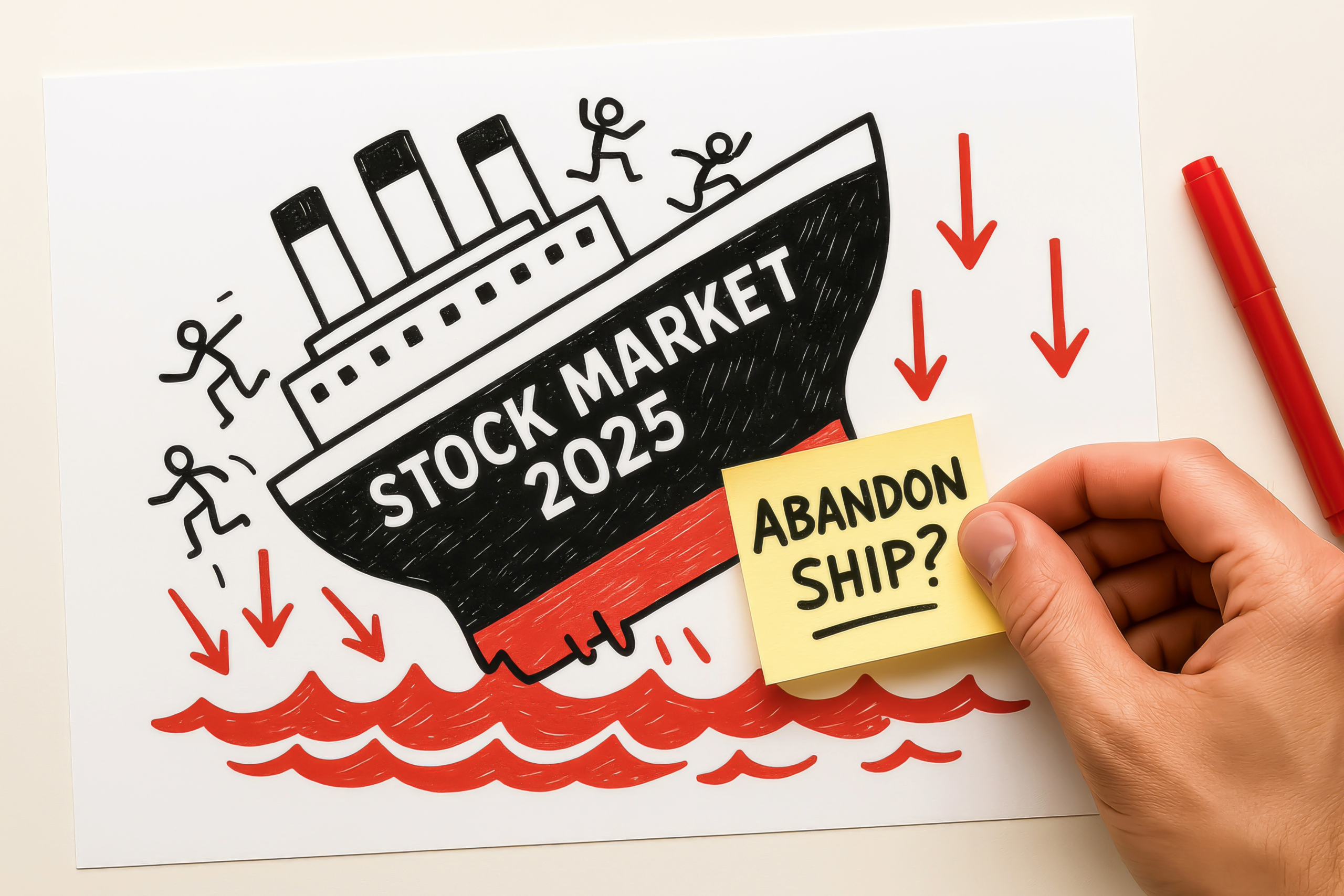The 2025 market crash marked one of the most turbulent financial periods in recent history. Triggered by escalating global tariffs and trade disputes, the crash sent shockwaves through economies and markets worldwide. This article explores the causes of the downturn, its economic impact, how investors are responding, and what strategies can help navigate this new financial landscape.
Causes of the 2025 Market Crash
The 2025 market crash was largely caused by rising tensions between major world economies—especially the U.S., China, and the European Union—over trade. A series of new tariffs and retaliatory actions triggered fear in the markets and slowed down global trade.
- S. Tariffs on the European Union
On May 23, 2025, President Donald Trump announced large tariffs-up to 50%- on all goods imported from the European Union[1]. His plan move was called “Liberation Day”, aimed at reducing the U.S. trade deficit with the EU, which had reached over $235 billion in 2024.[2] These sudden tariffs shocked investors and caused stock markets to fall around the world.
- China’s Retaliatory Tariffs
In response to the U.S. tariffs, China imposed a 34% reciprocal tariff on all U.S. goods starting April 10, 2025[3]. This made it harder and more expensive for U.S. businesses to trade with China, leading to even more uncertainty in global markets. The tariffs affected a wide range of products, including pharmaceuticals, crude oil, and agricultural commodities. Additionally, China added 11 American companies to its “unreliable entity list” and imposed export controls on 16 U.S. firms, further straining economic relations3.
- The European Union Responds
The EU responded to the U.S. tariffs by reimposing and expanding its own duties on American goods[4]. The EU added tariffs on steel, aluminum, and agricultural products, including poultry and beef. In total, the EU placed tariffs on over €20 billion worth of U.S. products. These measures were designed to offset the economic impact of the U.S. tariffs and protect European industries.[5]
Together, these actions set off alarm bells across the world. With trade between big economies becoming more expensive and uncertain, businesses started slowing down, and the stock market quickly dropped.
Economic Impact of the 2025 Market Crash
The 2025 market crash, driven by escalating trade tensions and aggressive tariff implementations, has had profound effects on both the U.S. and global economies.
- S. Economic Slowdown
- GDP Growth: The U.S. economy’s growth that was forecasted for 2025 has been revised downward to just 0.8%, a significant decline from the previous projection of 2.0%. This slowdown is attributed to reduced consumer spending, decreased business investments, and heightened uncertainty stemming from trade policies.[6]
- Inflation: Inflation rates are expected to rise to 4-5% during 2025, largely due to increased costs from tariffs on imported goods. This surge in prices is contributing to concerns about potential stagflation—a combination of stagnant economic growth and high inflation.
- Global Economic Disruptions
- Trade Volumes: Global trade volumes are declining as countries impose retaliatory tariffs, disrupting supply chains and increasing costs for businesses worldwide.
- Emerging Markets: Emerging markets are facing capital outflows and currency devaluations as investors seek safer assets, leading to financial instability in these regions[7].
- Commodity Prices: Commodity prices, particularly oil, have experienced significant declines. For instance, U.S. oil futures settled at $66.95 per barrel, marking a 6.6% tumble, as concerns about a slowing global economy and oversupply by OPEC members weigh on the market.[8]
- Investor Behavior and Market Volatility
- Stock Market Declines: Major stock indices have declined significantly, with the S&P 500 finishing in correction territory after losing 12.17% from its record high in February. Similarly, the Nasdaq Composite closed down 17.96% from its record high in December.[9]
- Safe-Haven Assets: Investors have turned to safe-haven assets like gold and U.S. Treasury bonds. Gold surged to a new record above $3,160 per troy ounce, while Treasury bond yields fell sharply, indicating a flight to safety amid market uncertainty.[10]
Investor Reaction and Sentiment
The 2025 market crash caused widespread uncertainty, and investors quickly shifted their strategies to protect their capital.
- Flight to Safety: Investors turned to traditional safe-haven assets. Gold surged above $3,160 per ounce, and demand for U.S. Treasury bonds pushed yields lower, showing a clear shift toward stability over risk.[11]
- Retail Investors Turn Defensive: Many small investors pulled out of the stock market after major indexes fell sharply
- Pessimistic investor sentiment: With uncertainty about future policy decisions, many investors chose to wait. Market confidence remained low, and volatility stayed high as traders reacted to each new development in the global tariff standoff.
Outlook for Investors Amidst the 2025 Market Crash
While the 2025 crash has shaken investor confidence, many are adapting their strategies to navigate ongoing uncertainty.
- Diversify Globally
More investors are shifting money into European markets and away from U.S. stocks, citing better stability abroad.
- Focus on Safe Assets
Assets like gold and short-term bonds are gaining favor. Gold hit record highs as investors seek protection from inflation and volatility.
- Stay Informed
With policy changes driving the market, staying updated on tariffs and central bank moves is essential.
The events of 2025 have reshaped global markets and investor behavior. While trade tensions remain a concern, a thoughtful approach—grounded in diversification, safe asset allocation, and awareness of policy changes—can help investors manage risk and prepare for recovery. Staying informed and adaptable will be key in the uncertain road ahead.
[1] Fresh economic fears as Trump reignites trade war with ‘straight 50% tariff’ on Ireland & EU plot branded ‘bad idea’ | The Irish Sun – May 23, 2025
[2] Trump’s Issue With the E.U. as He Threatens 50% Tariff | TIME – May 26, 2025
[3] China imposes 34% reciprocal tariffs on imports of US goods in retaliation for Trump’s trade war | CNN Business – April 4, 2025
[4] The EU countermeasures to US tariffs – Bird & Bird – March 13, 2025
[5] EU retaliates against Trump tariffs with €26bn ‘countermeasures’ | Trump tariffs | The Guardian – March 12, 2025
[6] US-China Trade War: Economic Impact and Market Disruption
[7] Why trade tensions are a ‘storm cloud’ over financial markets | World Economic Forum
[8] Trump’s massive tariffs shake markets, spark recession fears | CNN Business
[9] Trump’s massive tariffs shake markets, spark recession fears | CNN Business
[10] Trump’s massive tariffs shake markets, spark recession fears | CNN Business
[11] Trump’s massive tariffs shake markets, spark recession fears | CNN Business

























